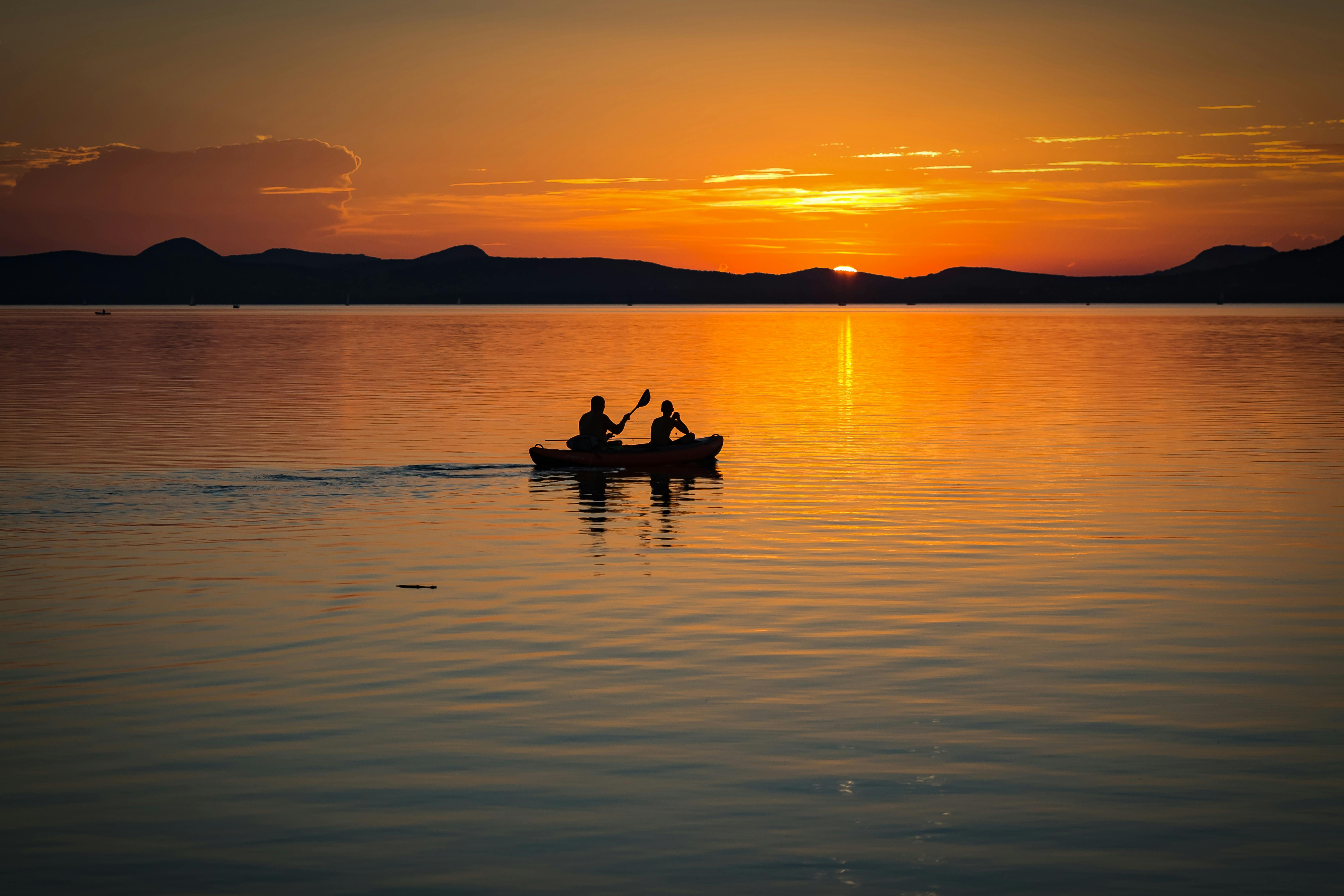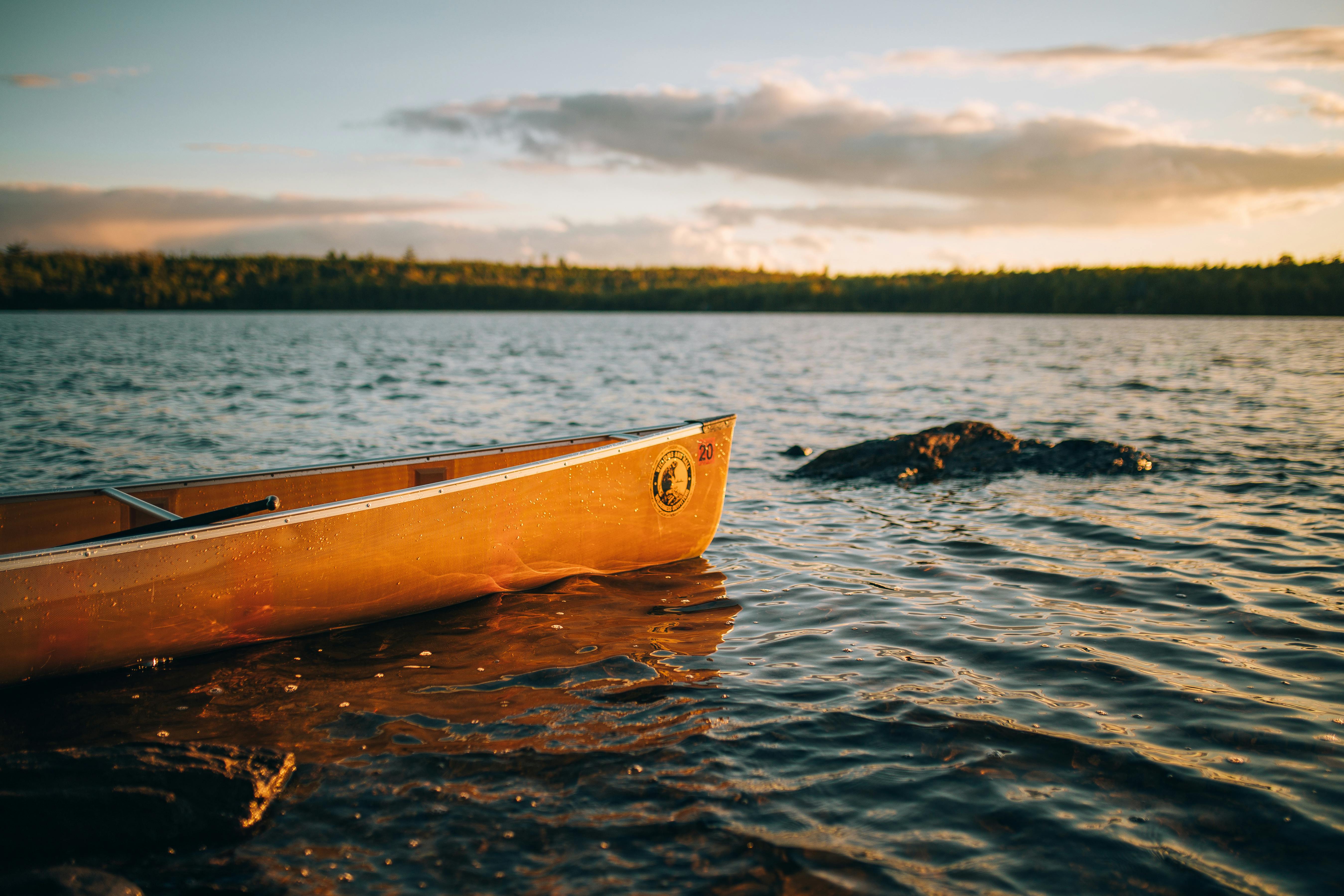Ever wondered what it takes to master a canoe? Whether you’re dreaming of serene lake activities or thrilling river exploration, we’ve got you covered. Let’s dive into this step-by-step guide and turn you into a paddling pro!
Key Takeaways
- Understand the basics: Learn about different types of canoes and essential equipment.
- Master paddle strokes: Techniques are crucial for effective paddling and control.
- Prioritize safety: Know the safety measures and gear necessary for a secure outing.
- Plan your routes: Choose suitable canoe routes for your skill level.
- Enjoy the adventure: Embrace the excitement of canoe trips and the beauty of nature.
Understanding the Basics of a Canoe
Source: Wikipedia
Before we get into the nitty-gritty, let’s start with the basics. What exactly is a canoe? Essentially, a canoe is a lightweight, narrow watercraft, typically pointed at both ends and open on top, propelled by one or more seated or kneeling paddlers facing the direction of travel using single-bladed paddles.
Types of Canoes
There are various types of canoes designed for different purposes. Here’s a quick rundown:
| Type | Description |
|---|---|
| Recreational Canoes | Best for calm waters like lakes and slow-moving rivers. They’re stable and easy to maneuver. |
| Whitewater Canoes | Designed for navigating rapids and rough waters. They’re more durable and agile. |
| Touring Canoes | Ideal for long-distance trips. These canoes are built for speed and efficiency. |
| Fishing Canoes | Equipped with features for fishing, such as rod holders and extra storage space. |
Want more detailed information? Check out this Wikipedia article on canoes.
Canoeing Equipment
Before you hit the water, you’ll need some essential equipment:
- Canoe: Choose the right type based on your activity.
- Paddle: Single-bladed paddles are standard for canoes.
- Personal Flotation Device (PFD): Safety first! Always wear a life jacket.
- Dry Bags: Keep your belongings dry and secure.
- First Aid Kit: Be prepared for any minor injuries.
Source: Pexels.com
Mastering Canoeing Techniques
Alright, you’ve got your gear, and you’re ready to go. But how do you actually paddle a canoe? Let’s break down some essential techniques.
Paddle Strokes
Learning different paddle strokes is crucial for maneuvering your canoe effectively. Here are a few basics:
- Forward Stroke: The most basic stroke, used to propel the canoe forward. Place the paddle in the water near your toes and pull it back in a straight line.
- J-Stroke: A corrective stroke that helps keep the canoe in a straight line. At the end of the forward stroke, turn the paddle in a J-shape.
- Draw Stroke: Used to move the canoe sideways. Place the paddle in the water perpendicular to the canoe and pull it towards you.
- Sweep Stroke: Helps turn the canoe. Sweep the paddle in a wide arc from the front to the back of the canoe.
Balancing and Steering
Balance is key in a canoe. Keep your center of gravity low and try to move smoothly to avoid tipping over. When it comes to steering, the person at the back (stern) has the most control. Use the paddle strokes mentioned above to navigate effectively.
Teamwork in Tandem Canoeing
If you’re not paddling solo, communication with your partner is vital. The person in the front (bow) sets the pace, while the person in the stern steers. Work together to synchronize your strokes for efficient paddling.
Video Tutorial
Want to see these techniques in action? Watch this helpful video to learn the basics of how to canoe:
Ensuring Canoe Safety
Safety should always be your top priority when you’re out on the water. Here are some crucial safety tips to keep in mind.
Essential Safety Gear
Always have the following gear on board:
- Personal Flotation Device (PFD): Wear it at all times.
- Whistle: For signaling in case of emergencies.
- First Aid Kit: For minor injuries.
- Weather-appropriate Clothing: Dress in layers and bring waterproof gear.
“Safety isn’t expensive, it’s priceless.” – Unknown
Weather Awareness
Check the weather forecast before heading out. Avoid canoeing in extreme conditions like high winds or thunderstorms. If the weather suddenly changes, get to shore as quickly and safely as possible.
Emergency Procedures
Know what to do in case of an emergency. If you capsize, stay calm. Hold onto your paddle and the canoe. If possible, flip the canoe back over and re-enter from the stern or bow.
Source: Pexels.com
Planning Your Canoe Routes
Choosing the right canoe route can make or break your trip. Here are some tips for planning a successful outing.
Researching Canoe Routes
Do some research to find routes that match your skill level. Beginner routes are usually on calm lakes or slow-moving rivers. For more experienced paddlers, whitewater routes offer a thrilling challenge.
Considering Distance and Duration
Plan your trip based on how far and how long you want to paddle. For a day trip, a 5-10 mile route is manageable for beginners. For overnight trips, consider the availability of campsites along the way.
| Route | Distance | Difficulty |
|---|---|---|
| Lake Lanier | 8 miles | Easy |
| Chattahoochee River | 12 miles | Moderate |
| Ocoee River | 15 miles | Challenging |
For more route ideas, check out this canoe guide.
Embarking on Your Canoe Adventure
Now that you’re equipped with knowledge and gear, it’s time to embark on your canoe adventure. Here are some additional tips to make the most of your experience.
Joining Canoe Tours
If you’re new to canoeing, consider joining a guided tour. It’s a great way to learn from experienced paddlers and explore new areas safely. Look for local tours that provide equipment and instruction.
Canoe Rentals
If you don’t own a canoe, rentals are a convenient option. Many outdoor adventure companies offer canoe rentals by the hour, day, or even week. Ensure you choose a reputable rental service that provides quality equipment.
Canoe Camping
For those looking for an extended adventure, canoe camping combines paddling with wilderness camping. Pack light but include all essentials like food, water, shelter, and navigation tools. Plan your route to include designated campsites or suitable spots for wild camping.
Canoe Fishing
Canoe fishing is another fantastic way to enjoy the water. Canoes allow you to access remote fishing spots that are often unreachable by larger boats. Make sure to bring the necessary fishing gear and follow local fishing regulations.
For more advanced canoeing techniques and adventures, visit Canoe Intelligence.
And there you have it! By now, you should have a solid foundation for starting your canoeing journey. Remember, the key to mastering any new skill is practice and patience. So, grab your paddle, hit the water, and enjoy the ride!
Frequently Asked Questions (FAQs)
Q: Is a canoe the same as a boat?
A: While both are watercraft, a canoe is a specific type of boat designed for paddling with single-bladed paddles. Canoes are typically open on top and pointed at both ends, unlike other boats that may have different designs and propulsion methods.
Q: Is canoeing more difficult than kayaking?
A: It depends on personal preference and experience. Canoeing and kayaking each have unique challenges. Canoeing often requires more balance and teamwork, while kayaking can be more maneuverable and easier to handle solo.
Q: What are the two types of canoes?
A: The two main types of canoes are recreational canoes and whitewater canoes. Recreational canoes are best for calm waters like lakes and slow-moving rivers, while whitewater canoes are designed for navigating rapids and rough waters.
Q: Is a canoe a boat?
A: Yes, a canoe is a type of boat. It is a lightweight, narrow vessel propelled by paddles, typically used for recreational activities, fishing, and river exploration.




